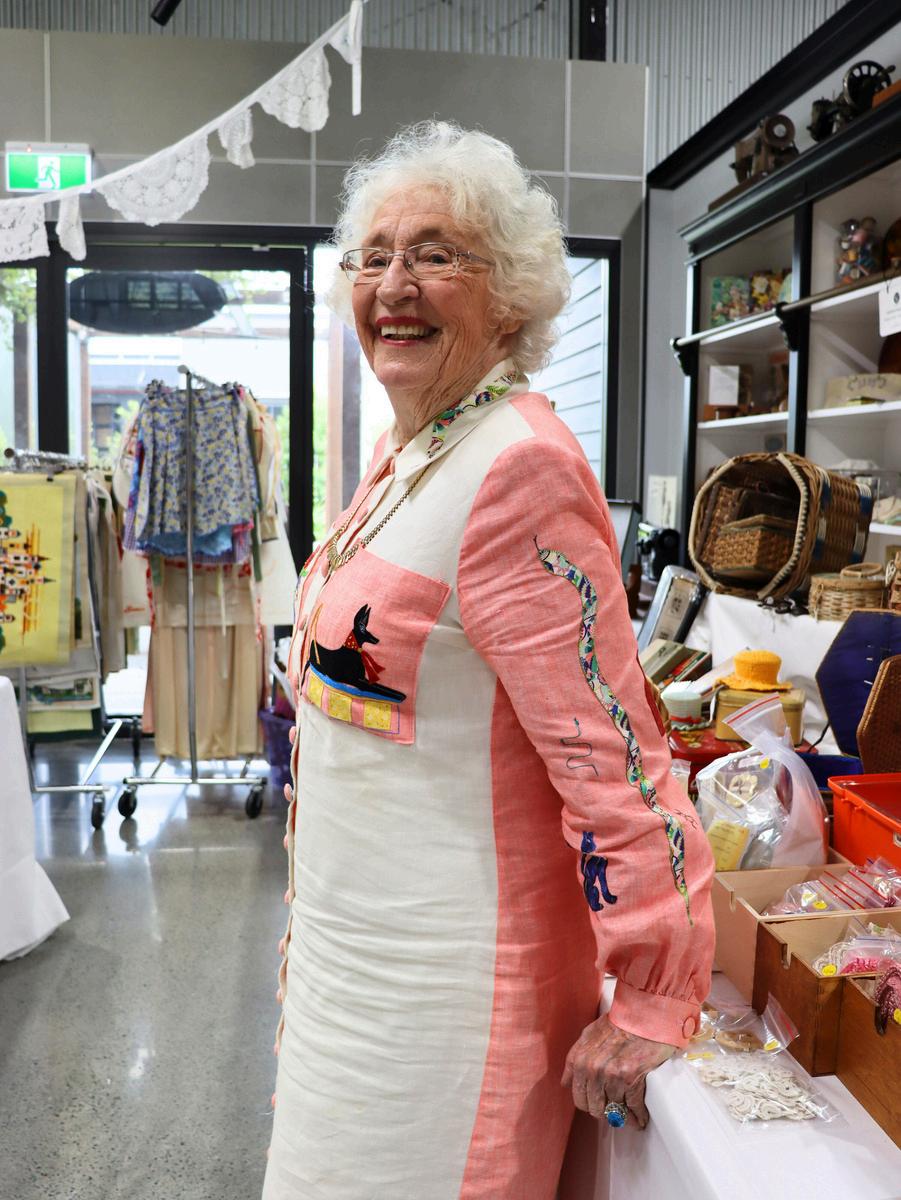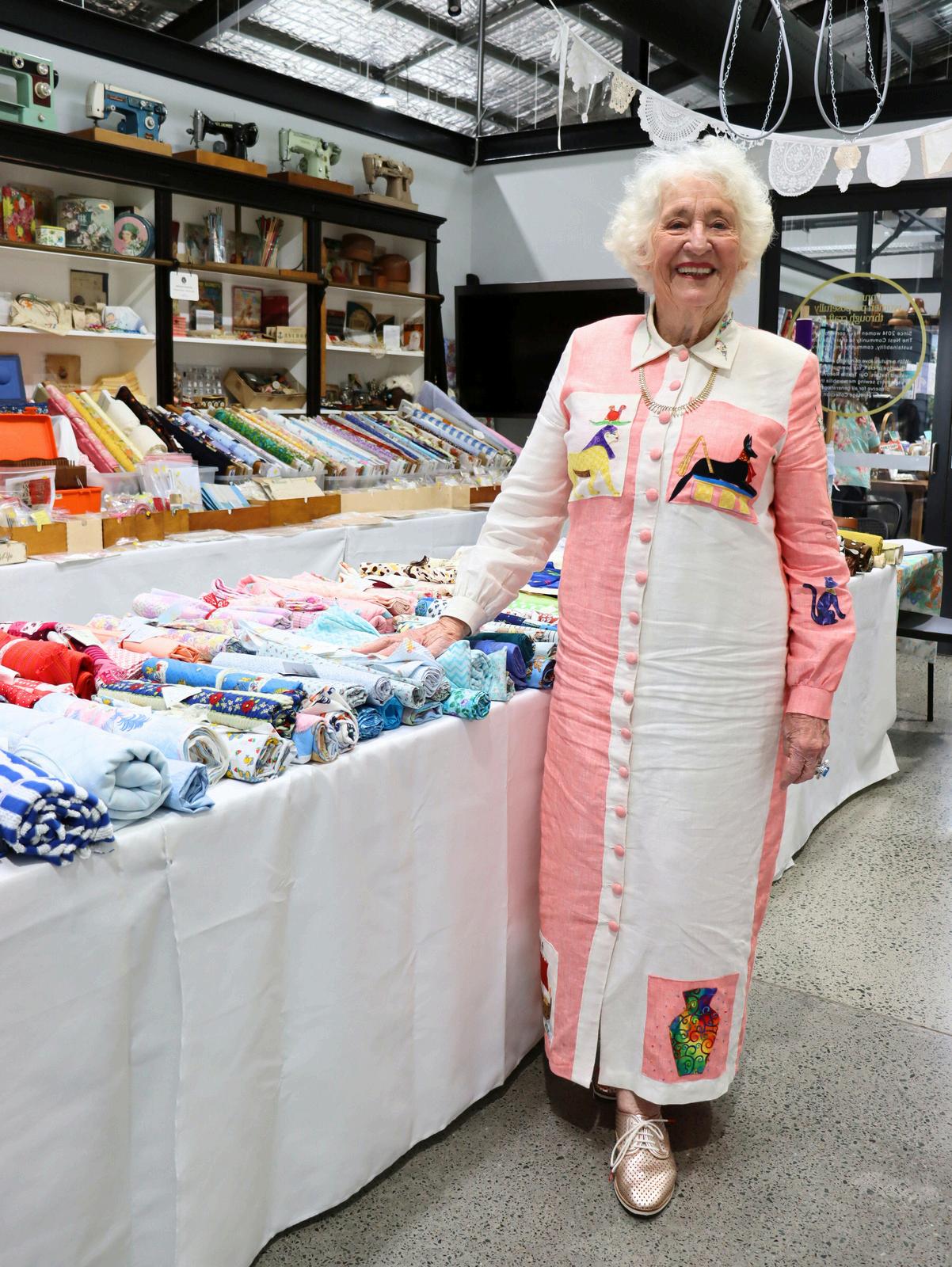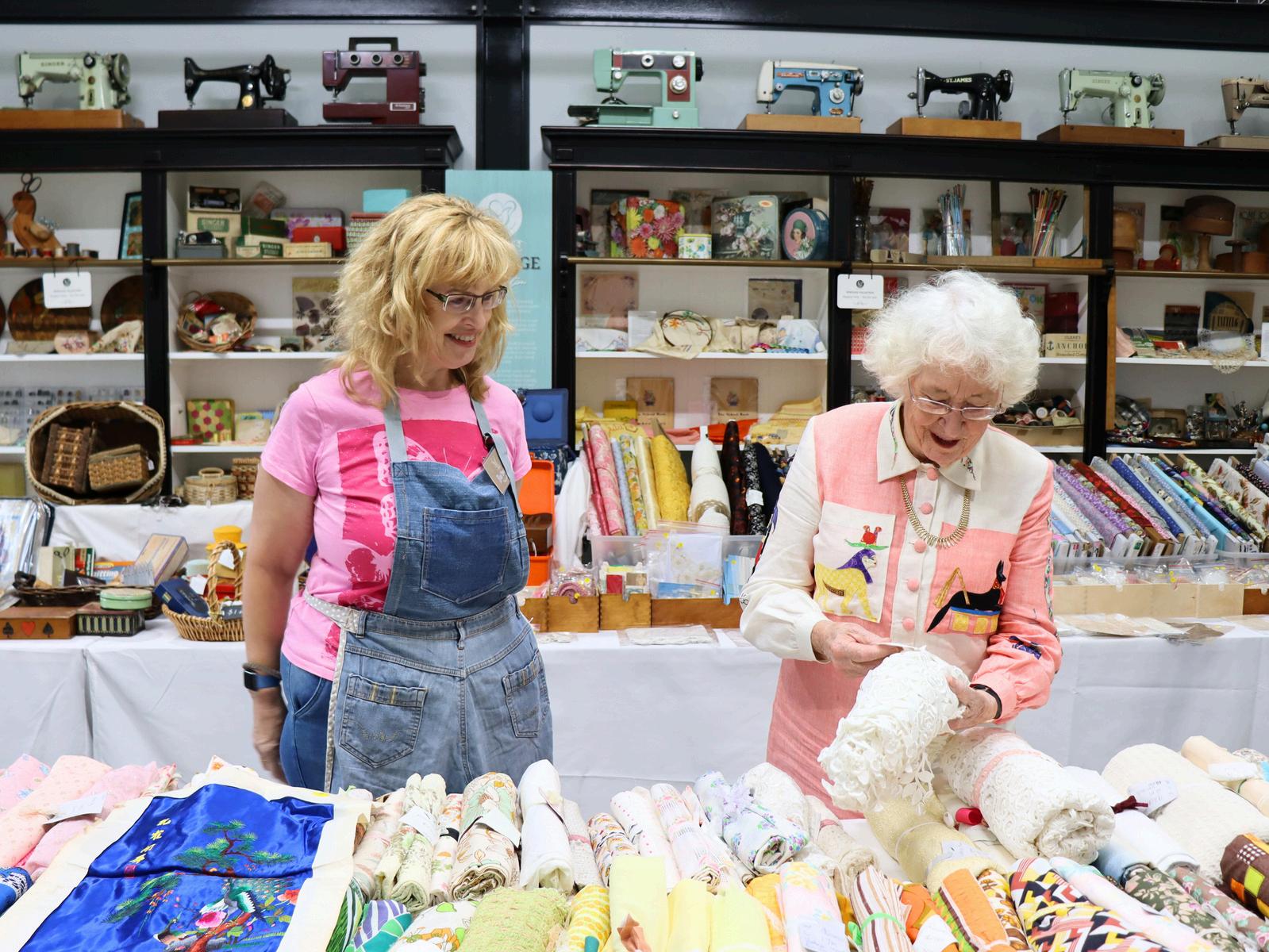
9 minute read
The Dressmaker Who Shaped Fashion Studies in Queensland
Long time Nest volunteer and board member Barbara has worked tirelessly behind the scenes, helping to write grant applications in addition to working regular shifts in The Nest Haberdashery. With a keen nose for a story, she proposed the idea of doing a feature article on her friend Maggie Low, ‘who set up Fashion for TAFE Queensland’. Fascinated by Maggie’s credentials, wanting to learn more about Fashion education and commemorate her contribution, Barbara and The Nest’s Program Manager, Monika Holgar, invited Maggie in for an interview.
Accompanied by her friend Pam, we meet a stunningly dressed, vibrant lady in her 90s. Over a cup of tea in the Gladys Mary Studio with the Heritage Collection as a backdrop, she regaled us with stories. One in particular stood out.
Once, when Maggie was Head of the TAFE fashion course, a guy who ran a big Public Service Department in Brisbane came to her office and said:
“I was wondering if you could help me make a pattern for women’s underwear I’ve got to wear women's underwear”.
Unfazed, she drafted something with him, which enabled him to make his own.
“He used to yarn to me because we sewed. He had a wife and children and a beautiful home and I asked if his wife minded. He said she accepted it. He wore the most beautiful women ’ s underwear to work everyday”.
So much of Maggie’s story has parallels to the wonderful book series by Rosalie Ham. The second novel in the series was of course made into the movie, The Dressmaker. But it’s the third book in the series, The Dressmaker's Secret that matches a similar timeline to Maggie’s.
The public servant friend Maggie talked about bears a remarkable resemblance to the cross dressing Sergeant Farrat character in the book. And like the main character, Tilly Dunnage, Maggie brought the Haute Couture ethos to Brisbane, at a time when we still copied European dress models and sold it as the latest fashion.
From making dolls dresses as a five year old, Maggie studied Home Economics in Pomona, eventually becoming the Fashion Subject Mistress of the Home Economics Department at MacGregor State High School. It was there that the Home Economics Inspectors approached her and she was asked to set up Fashion for TAFE in Queensland.
The development of Technical Education in Australia followed the British model, establishing Mechanics Institutes and Schools of Arts. Unlike independent tertiary institutions like Universities, TAFE has always been Government controlled, with a primary purpose of supplying skilled labour. In the era where Maggie became a part of it, it was very male dominated and did little to cater for women.
“In the late 50s when they approached me, there were no dressmaking or pattern making courses for women wanting to learn how to sew. So I thought what are the needs? What do women want? I went all around Brisbane and asked people in the industry what sort of people they wanted to employ? Because there were no people to employ.
They wanted industrial machinists, pattern makers, fine finishers They wanted people who could put in zips and just do general sewing. Then they also wanted to cater for people who wanted to make their own clothes to a high standard of haute couture
So then I went overseas, to Rome, London and Scotland and visited a lot of fashion colleges to see what they were providing. When I came back with all these notes, I wrote the program Because this was the first in Queensland, I had a battle to get it through TAFE because I was a woman ”
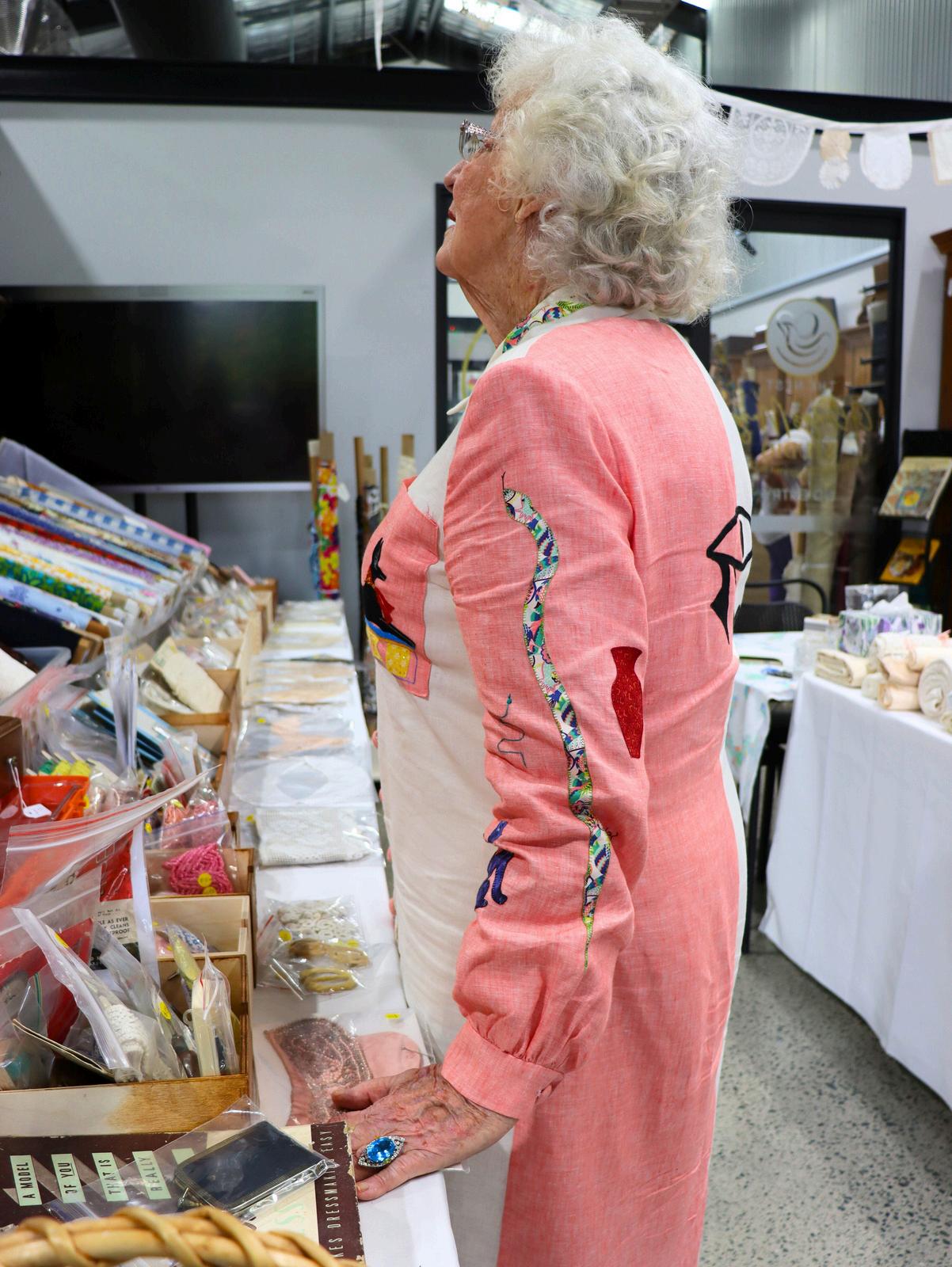
Once the course was approved, Maggie was given space in Queen Alexandra House, Coorparoo, with only a few old Singer treadle machines. After getting newer industrial machines, cutting tables and dress models, they were ready to launch.
“We delivered a certificate course in fashion which offered basic sewing, pattern making, fine finishing techniques, grading, menswear, children's wear and all these sorts of courses including millinery. Now, women were lining up at 5 o'clock in the morning to get into these courses. I was ringing around every person I knew to get teachers who could teach these courses at night.
It was overwhelming, the need that was out there for women to learn, and they just loved it. In the end, we had something like 3,000 students passing through the fashion house a year. But it was a constant fight against the men in TAFE for us to have a voice that there was a need for women ” .
Gradually the diploma course was being offered during the day, at night and full time. Maggie recalls how there was always great camaraderie with the students, but the work was always to a high standard.
“It was also therapeutic for women because in those days, not a lot of women worked. So they could forget the nappies and the babies and the housework, come to TAFE and do something creative. When they got home they sewed in their spare moments. I'm a great believer in the therapeutic contribution that sewing makes to women and men.
I had some students - they didn't put the baby in the playpen. They put their machine in the playpen and then did their sewing”.
From humble beginnings the fashion program grew thanks to the flexibility of the TAFE course structures, Maggie was instrumental in developing courses for wedding dresses and even swimwear.
“I'm a perfectionist and I will aim for that perfection at any cost. I got on very well with my staff, but unfortunately, probably for them, a garment had to be right. We used to have these fantastic fashion parades at Queen Alexandra House with vintage cars to carry the models up to the stage. That was the standard we set”.
In the next few years Maggie’s TAFE course and students won numerous awards and local fashion was exploding with events like the Mercedes Benz Fashion Week emerging. After more than 10 years developing the fashion program, Maggie had reached a point of being ‘ on automatic’. With her husband in poor health, he retired young [at 52] and they moved to the Sunshine Coast. As the saying goes, you can’t keep a good woman down, and Maggie was honoured to be once again asked to set up a Fashion course, this time for Nambour TAFE.
“When TAFE asked me to set up the course after Alan retired, a couple years before he died, I said I'll only set it up and get it going. Then he went into hospital, so I used to spend time with him at night and I felt that rather than setting up other people to teach, I needed to do it myself.
The Sunshine Coast has got a tremendous amount of talent. When I advertised for staff, I had one who was a brilliant swimwear manufacturer. Another woman was head designer of Q Designs in Sydney.
The funny thing about the Sunshine Coast is that there are people who come up to escape to the country or the bush. There are remarkable engineers, remarkable artists up there”.
Throughout the telling of her story, Maggie often touched on the benefits of the well fitting garment. It's about understanding construction,
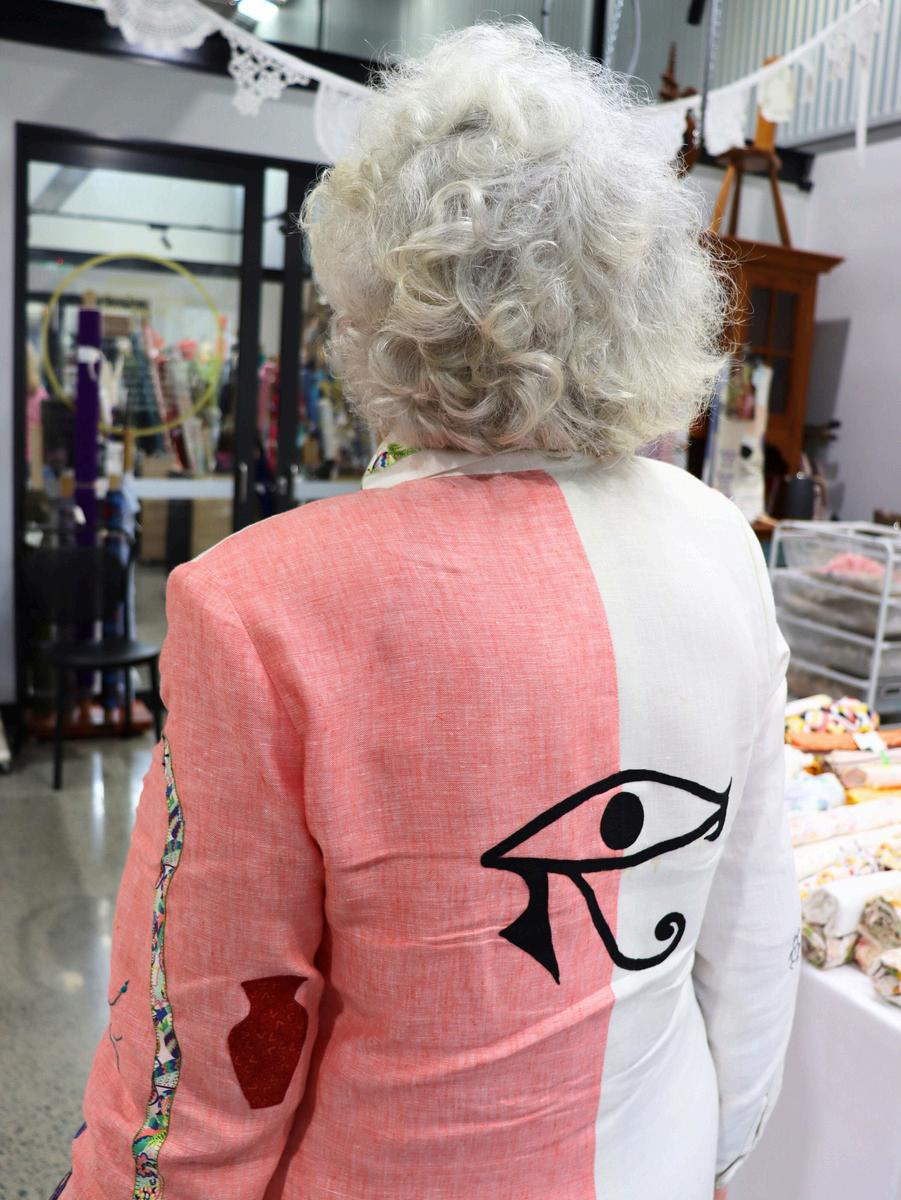
and fabric, how to highlight a person's features and make them the best version of themselves.
Anyone who’s seen The Dressmaker, may relate to this. That memorable scene when frumpy shopkeeper’s daughter Gertrude Pratt is transformed into the Belle of the Ball by Tilly Dunnage’s couture sewing skills.
During our interview, Maggie’s wearing a striking shirtmaker dress that looks like a coveted Alemais piece. We find that it’s her original design. Made from gorgeous linen, she has appliqued various Egyptian inspired motifs, chosen to ‘keep her safe’. All hand stitched by her.
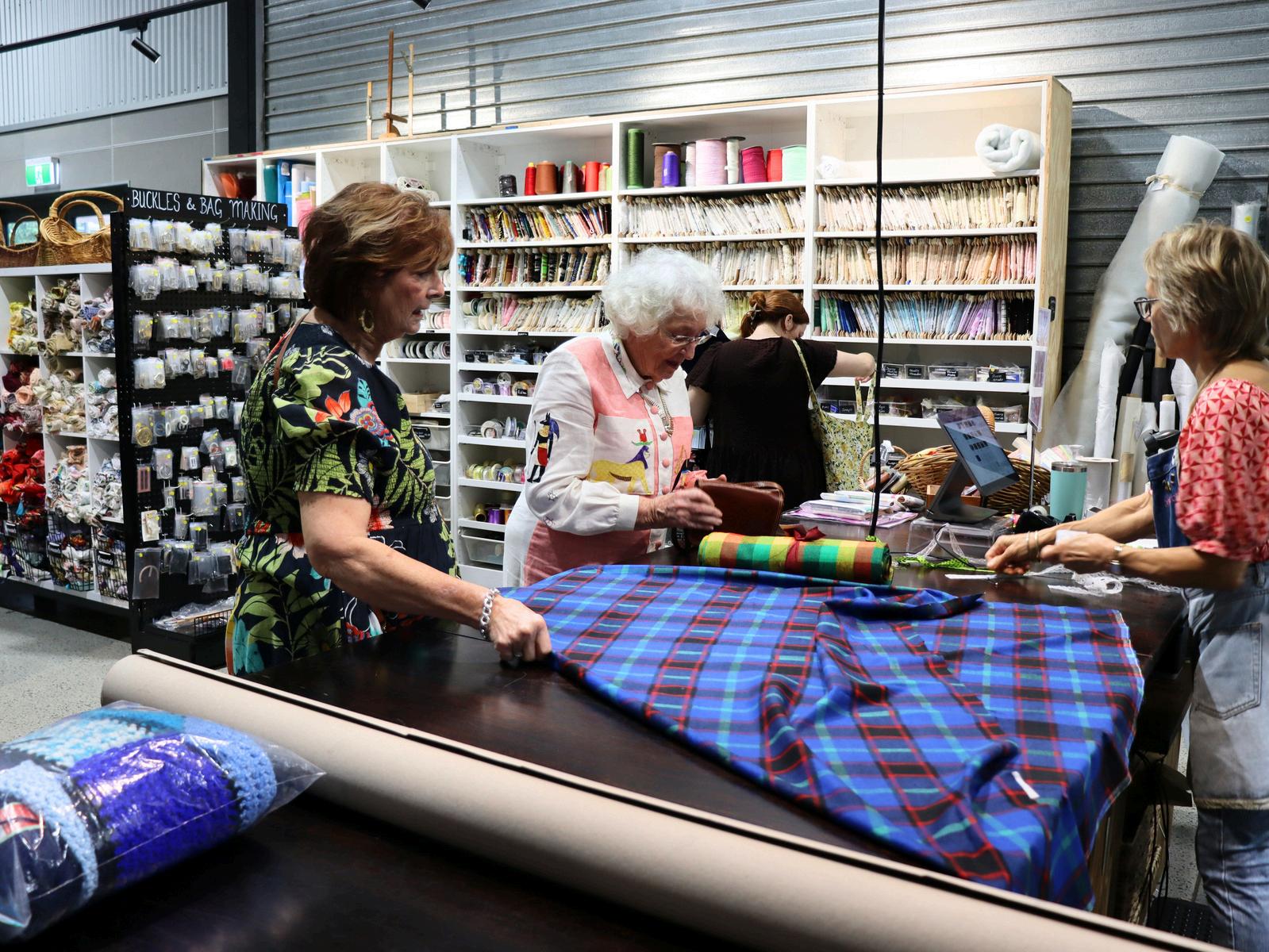
Despite her years, Maggie still actively sews for herself and others
“I’ve lived to 92. Sewing has been my life and I'm still sewing. Last year I made this wedding outfit. It was embroidered tulle but it wasn't embroidered enough. The sleeves are just sheer tulle and we cut out motifs and hand stitched them in places and put pearls in between them. On the wedding, a lady who owns an upmarket shop in the Valley, went up to the bride and she said the only place you'd get a dress like that was a Couture House”.
Indefatigable is a word that would best describe Maggie. The wedding project was six months of work and she not only made the Bride’s dress, but also outfits for the flower girls, Mother of the Bride and herself. She even let out her brother’s suit and helped make church decorations.
Thanks to pioneers like Maggie working in the TAFE system, the Australian Fashion Industry has been able to flourish.
In 2019 TAFE Mt Gravatt established a Fashion Centre of Excellence, a testament to all the groundwork that Maggie did to establish the program.
A number of times during our conversation with Maggie, she lamented how Home Economics is no longer part of the Primary or Secondary School system. As she says, "We ’ ve all got to eat and we ’ ve all got to dress, so it makes sense to go into either of those industries. Learning to sew is not just about learning a trade skill, it’s empowering because you can alter a dress to fit, sew on a button, fix a zip or just hem a pair of pants - not just for yourself, but also for others.
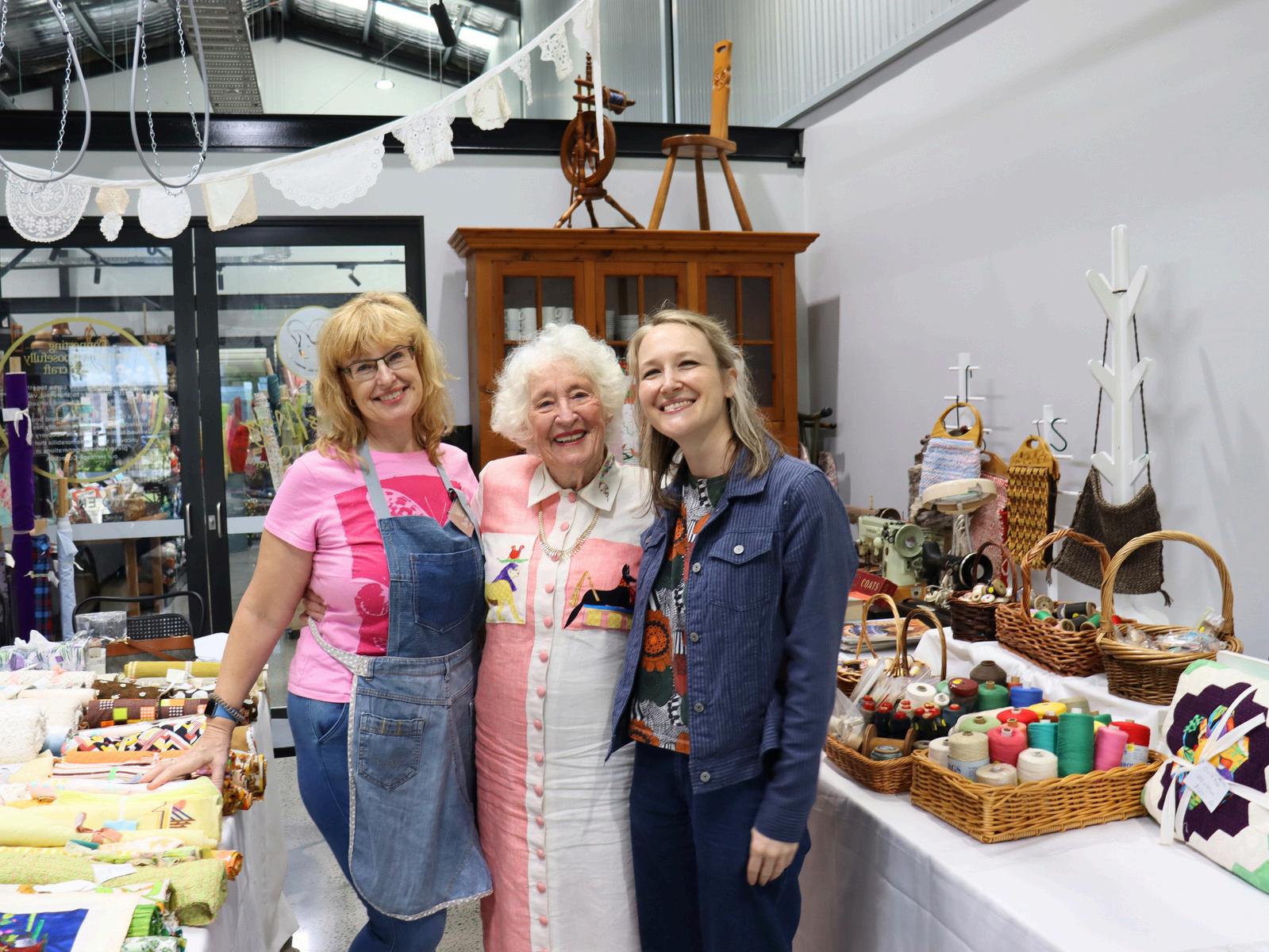
“I love it. I do an awful lot of work in the complex where I live. I will alter clothes for people and I never charge them of course. Just the other day I had to put a zip in a jacket for a guy. I'm always sewing. There are very few days where I don’t touch my machine ”
Maggie is a larger than life character with an energy that is fuelled by her creativity and connection to community. The Nest’s charitable mission is to ‘connect women purposefully through craft’ and Maggie’s life seems to be an exemplar of that philosophy. We are so honoured to have spent time with her and to be able to acknowledge her contribution.
How to sum it up? As always Maggie says it best “I think sewing enables you Because I think you get to give back”
